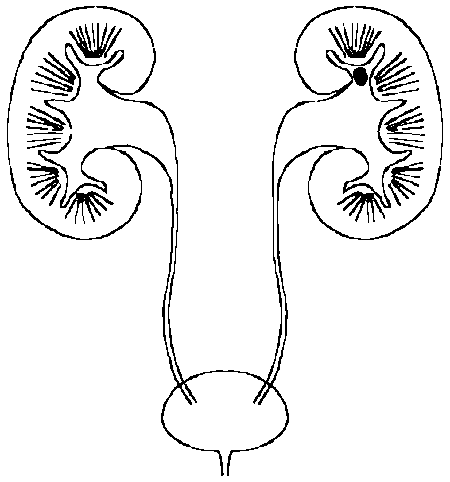

The passage of a calculus (stone) through the urinary tract is diagrammed here. Calculi form when there is increased excretion of solutes such as calcium and when urine alkalinity, acidity, stasis, and/or concentration are favorable. The most common varieties of calculi are:
| Type of Stone | Frequency |
|---|---|
| Calcium oxalate (or phosphate) | 75% |
| Magnesium ammonium phosphate (struvite, or "triple phosphate") | 12% |
| Uric acid | 6% |
| Cystine | 1% |
| Other | 6% |
Stones containing calcium are far more frequent than other types, and about half the time occur when there is hypercalciuria. Only about 10% of the time do they appear as a consequence of hypercalcemia. The struvite stones are also known as "infection" stones because bacteria such as Proteus that split urea to ammonia favor their formation. Uric acid stones may be seen in association with gout, but often are not, and may just reflect increased precipitation of urates in an acid urine. Rare cystine stones also form in acid urine.
Urinary tract calculi are usually unilateral and about 1 to 3 mm in size. Their passage is marked by intense abdominal or back or flank pain. This pain can be paroxysmal, known as renal or ureteral "colic". Hematuria may also be present. Larger stones that cannot pass may produce hydronephrosis or hydroureter.